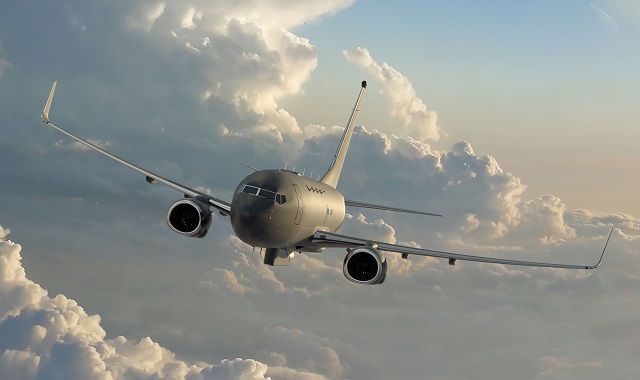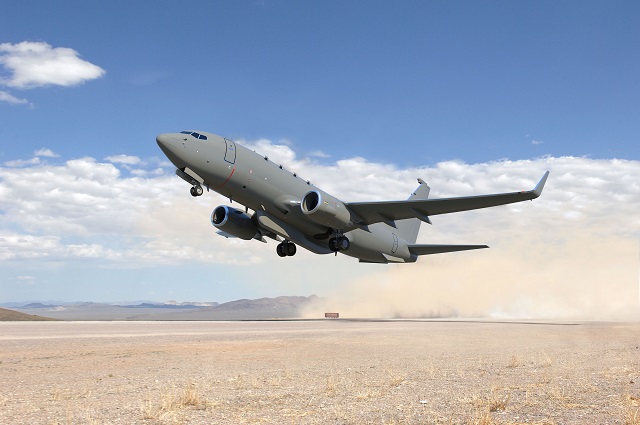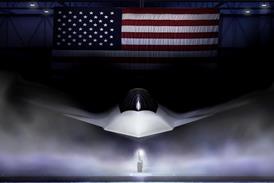Boeing, Lockheed Martin and Northrop Grumman’s JSTARS teams are in a “blackout period” awaiting an announcement by the US Air Force in late August or early September about which prime contractors will proceed to the first stage of the multi-billion dollar aircraft recapitalisation programme.
The air force intends to select “up to three teams” for the forthcoming pre-development technology maturation and risk-reduction phase, meaning neither’s place is secure and one, or perhaps even two, primes could miss out.
Northrop and Lockheed used last month's Paris Air Show as a platform to announce their respective industry teams, but Boeing stayed surprisingly quiet about its offer, despite responding to the air force’s “request for quote” for an E-8C Joint Surveillance Target Attack Radar System (JSTARS) replacement platform by the 9 June deadline.
The air force is looking to buy 17 next-generation ground-looking target indication and battle management systems to replace the existing 707-based fleet for initial operations in 2023.

Boeing Defense, Space & Security
In an interview with Flightglobal last week, Boeing said it is still a strong horse in the race, offering its 737-700BBJ1 commercial business jet as the basis for its design. The BBJ1, also known as “737-700 Increased Gross Weight,” combines the 737-700 fuselage with -800 wings for greater range and maximum takeoff weight. It has a larger cabin than the narrowbody Gulfstream and Bombardier business jets being considered by Northrop and Lockheed respectively.
Rod Meranda, head of business development for Boeing’s next-generation JSTARS capture team, says Boeing is not prepared to announce teaming arrangements just yet because most industry teams announced so far are not exclusive and could change depending on the final requirements.
Meranda says Boeing is in discussions with several potential suppliers regarding the communications, battle management command and control (BMC2), and radar elements, but the company brings its own platform from the commercial side, unlike the other primes.
Boeing has approached both Raytheon and Northrop about their respective radar offerings, and neither company is believed to have signed any exclusive partnerships at this point. Northrop says it is partnering with Gulfstream and L-3, and Lockheed has joined forces with Raytheon and Bombardier, but whether those teaming configurations hold firm remains to be seen.
“The requirements aren’t even done yet, so it’s hard to have teaming arrangements when the requirements haven’t been officially set,” Meranda says. “As far as we know, Raytheon is not exclusive to anybody. We talked to both [radar providers Northrop and Raytheon], and other companies.”

Boeing Defense, Space & Security
Boeing says its 737-700 “meets or exceeds” every draft requirement put forward by the air force so far, and its experience producing the Navy P-8A Poseidon and various radar-carrying airborne early warning and control (AEW&C) aircraft give it the right systems integration know-how for JSTARS.
The company is bullish going into the pre-EMD contract decision, but says nothing is guaranteed. “The air force has asked each team to put forward a fully-integrated solution. We were able to answer that, and hopefully we’ll get a contract award,” Meranda says.
The air force says missing out on the 16-month risk reduction phase does not exclude anyone from competing for the final development contract, but Meranda thinks that would be a tough battle to win without the initial contract.
On building a prototype, the air force’s top acquisition executive, William LaPlante, thinks the more flying prototypes the better. But Meranda says Boeing probably won’t build a flying prototype without first winning a development contact.
Northrop has been flying a G550 testbed aircraft to demonstrate its capabilities, but Boeing is only committing to the current programme plan at this point, which is for delivery of two test or “green” aircraft during the development phase. “I don’t see us putting up a full-up JSTARS system in the prototype configuration,” Meranda says.
Source: FlightGlobal.com























